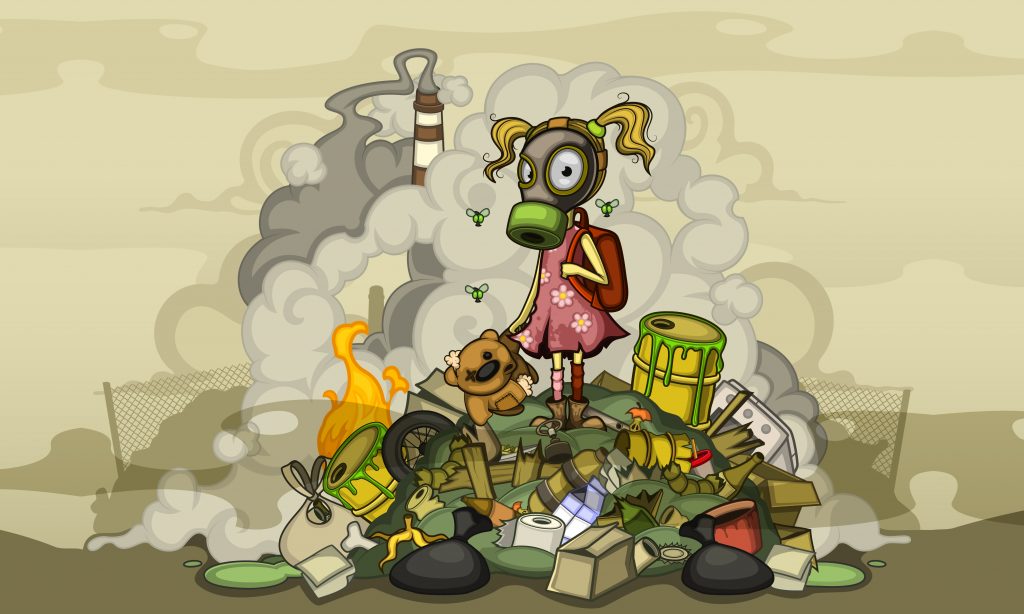The very essence of instinct is that it’s followed independently of reason.
Charles Darwin (1808-1882), English naturalist and geologist
The 7th of September is the International Day Of Clean Air for Blue Skies. What does clean air mean? The US Environmental Protection Agency (EPA) and the World Health Organization (WHO) have shown that long-term exposure to air pollution increases mortality rates and cases of cardiopulmonary diseases and lung cancer. Studies indicate that every year about 4.2 million people die from fine particulate matter (about 7.6% of global mortality), also called PM2.5 and PM10, where 2.5 and 10 indicate the particle size, respectively 2.5 and 10 microns (one micron is one millionth of a metre or 1 µm). The smaller the particle size, the more dangerous it is, because it remains suspended in the air for longer and can penetrate the lungs.
Of these 4 million victims, 1 million are in China. Data from 2015 indicated that PM2.5 concentrations in the winter were always above 100 µg/m3, with frequent peaks above 700 µg/m3, which is 20 times the maximum PM2.5 limit of 35 µg/m3 imposed by the EPA (1 microgram -µg- is one millionth of a gramme). To give a comparison, in Milan during the December-January period, we usually reach ∼ 45 µg/m3 of PM2.5. These particles have a reported density of ~1.5-2 g/cm3, so some quick maths tells us that 45 µg of particles equates to at least 3 million PM2.5s per cubic metre of air. Considering that at rest, we breathe on average about 11 cubic metres of air per day, on the worst winter days in Milan we inhale at least 30 million PM2.5s. Luckily perhaps, things seem on the verge of changing. New research just published in Nature Climate Change reports that China aims to reduce its fine particulate emissions by 70% by 2050.
Air pollution is not created only by the combustion of fossil fuels: some of it is generated by industrial processes, by natural combustion in agricultural areas, and by waste processes. Nevertheless, the combustion of organic products of fossil origin such as oil and coal remains the main source of PM2.5, with 40% of them emitted by transport alone. This week Nature dedicates a thought on the future of hydrogen energy, stressing how Europe is at the forefront of an economy pushing to dismantle fossil fuel-based energy in favour of hydrogen energy (the EIB (European Investment Bank) announced that from 2021 it will stop giving funds to companies that deal with fossil fuels). However, Nature warns of potential backlashes that this new market could bring, hinting that the success or failure of hydrogen technology will be determined by the way we will produce it: “Hydrogen” the journal says “is not a technology, but an energy source. It can be produced in a clean way or in a dirty way”.
Random numbers?
If you are wondering where the limits imposed by the EPA come from, here is the answer. They are taken from this 2002 article, accounted as the most cited article in the history of air quality research studies. The study, which lasted from 1983 to 1998, shows that fine dust is directly linked to diseases such as lung cancer, and proves that with every 10 µg/m3 increase in PM10 and PM2.5 there is an increase of up to 8% in the risk of developing fatal cardiopulmonary diseases and lung cancer.
Over the Pop
To get wider | From New Delhi to Beijing, passing through Mongolia, Pakistan and Uganda, CBS shows us an overview of the 50 most polluted cities in the world. The sun, a small pale dot, is barely a suggestion behind the milky fog.
To get deeper | Hydrogen economy is intricate and fascinating at the same time. In 2013, Jeremy Rifkin opened, as he often does, a very “visionary” theme, which was about hydrogen. Seven years have passed and it seems that this vision could become a reality. Recently Tim Smedley wrote his first book, shortlisted for the Royal Society Science Book Prize 2019, about the broader issue of air pollution and how to (potentially) end it, thus confirming the timeliness of the theme.
 This article appeared for the first time on our fortnightly newsletter. To keep up with the scientific debate, join the community of Monnalisa Bytes and to receive a preview of all our newsletters subscribe here!
This article appeared for the first time on our fortnightly newsletter. To keep up with the scientific debate, join the community of Monnalisa Bytes and to receive a preview of all our newsletters subscribe here!
